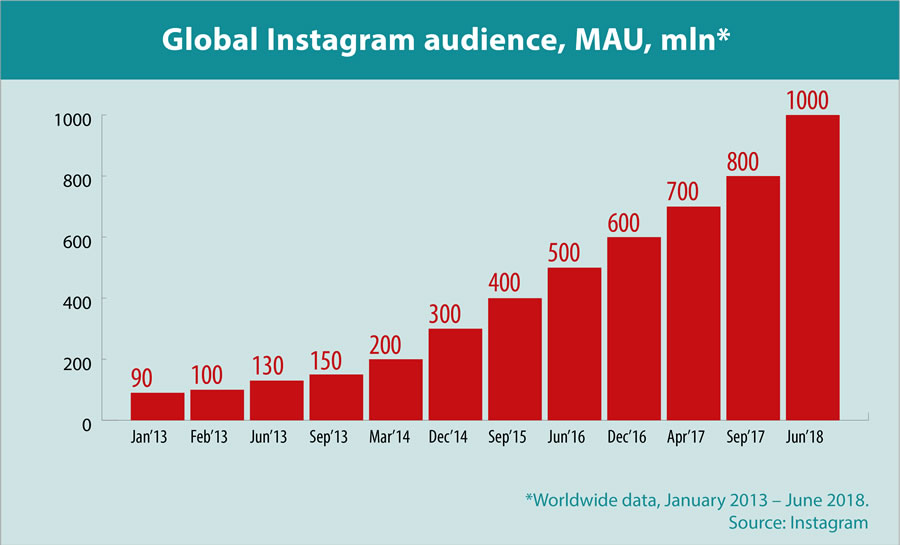Tatiana Dovluru, Head of Marketing and Polymer Membranes and PIR at TECHNONICOL Corporation, a leading producer of construction materials and SIBUR partner, talks about new product development, shares digital marketing tools for demand generation, discusses efficient customer acquisition channels, and explains how to avoid mistakes in digital communication.
What are the main stages of developing and launching new products in the construction materials market? Do you need a special approach to product promotion in this industry?
New product development consists of several stages, which are by and large the same for any industry or product and include idea generation, R&D and testing, test marketing, and commercialisation.
At the stage of idea generation, we create a pool of ideas drawing on proposals fr om employees, domestic and international market trends, new technologies and so on. These ideas are screened and analysed to sel ect the most promising and viable ones. This is a crucial stage, as it underpins the future product concept.
What criteria are you looking at when assessing the ideas?
We evaluate the market and competition, our production capacities and feedstock availability, product’s profit potential and introduction timeline, as well as possible risks and many other factors.
Based on this assessment, we create a factor analysis matrix for each idea. The winners are products with the highest aggregate score on profit potential, technical implementation, and market success. Using this information, the marketing team determines the product’s initial positioning, evaluates the market capacity and profitability, and sets preliminary prices. This way, a promising idea is transformed into a product concept, which needs to be tested on a small sample of target consumers.
At the next stage, we draft the statement of work and put together a working group composed of different department representatives: Marketing, Technical service, Production, Logistics, etc. We then proceed to the research and development stage, followed by testing and certification.
Strategic marketing of a new product is focused on communicating the product’s core value to the potential consumer.
What is a product development strategy and how is it implemented?
Strategic marketing of a new product is focused on communicating the product’s core value to the potential consumer. When formulating the value proposition, we identify the relevant market segments and our target audience, which could be the most numerous or well-to-do consumers, or those most accessible and loyal. We then position the product and determine the communication channels for the target audience. What is the role of digital marketing in promoting industrial products?
Let me give you an example. In 2018, digital marketing spending globally for the first time exceeded spending on offline advertising. In other words, advertisers, including major players, are increasingly changing their preferences. The world is exceedingly relying on the Internet, and Russia is no exception with the Internet penetration rate of close to 80% in 2019. Manufacturers have no other choice but to take their products to where the consumer is.
The world is exceedingly relying on the Internet, and Russia is no exception with the Internet penetration rate of close to 80% in 2019.
Quite telling is also the transformation of offline advertising with many companies using offline channels to promote their digital resources. In Moscow, for example, we often see billboards or TV commercials advertising websites such as remontnik.ru, wildberries.ru, avito.ru, beru.ru, etc.
Any other trends?
I would first of all mention the growing popularity of video content, primarily in the native format. Exceedingly popular are non-professional bite-sized videos that are easily consumable and contain minimal branding. This format is viewed as more credible as it is not perceived as intrusive advertising. This trend is clearly illustrated by the growth rate of Instagram, a social networking service for sharing photo, video, and stories, which exceeds that of other social media sites. TikTok, a short-form video app, has added more users in a year than Instagram has in 5 years. YouTube has also been demonstrating robust growth of over 30% annually.
In 2018, digital marketing budgets globally for the first time exceeded offline advertising budgets, even among major advertisers.
Do you use these platforms?
We have yet to work with TikTok, but we are actively using Instagram to target potential consumers, even though statistically 75% of its audience are women. At first glance, Instagram does not seem to like the best channel for our industry, but we nonetheless have been able to utilise for effective promotion of construction materials.
The next trend is the growing prominence of content marketing. Its format is changing towards greater focus on useful information and entertainment and less advertising. We are witnessing a fusion of journalism and copywriting. This has to do with the fact that, as estimated by the American Association of Advertising Agencies, the average city resident is exposed to over 5,000 advertising messages a day from various sources. With the advertising noise constantly growing, people do not have time to carefully study the texts. We take 1–1.5 seconds to decide whether to read further or not. Hence the more demanding requirements for content, which has to be concise and to the point to entice the consumer in a matter of seconds.
The final trend I would like to mention is what I call openness and accessibility. Internet has removed the communication barriers between the manufacturers and consumers. Today, any consumer is able and willing to directly communicate with the company, ask questions, and provide feedback. Therefore, companies need to be more flexible and forthcoming in adopting new interaction formats with consumers, using feedback, and communicating directly to customers. Any information about a product or company can start spreading uncontrollably with a potentially positive or negative impact on their reputation.
TikTok has added more users in a year than Instagram has in 5 years.
In 2019, Internet penetration rate in Russia was close to 80%.
What are the most effective digital marketing tools? What are they used for and how?
It depends on your marketing goals and resources. The same tool, for example contextual advertising, can vary in efficiency depending on the existing demand and the size of the marketing budget.
SMM, for example, is a great tool to build perception, connect customers with a brand on a personal level. Right now, it is not widely used in the construction industry, but we cannot afford to ignore it much longer.
Blogs, too, are not a sales channel, but they are quite efficient in shaping opinions and people’s attitudes towards a product, and increasing its recognition. We work with bloggers writing about the construction industry, both micro-influencers with fewer than 20,000 subscribers and those with bigger audiences. You can measure the integration effect by tracking such indicators as reach, number of views, percentage of video viewed, reposts, likes, comments and their content.
Articles posted on construction-related sites can be very efficient, if they meet certain criteria: provide useful and practical content, be written in the language of the target audience, and include high-quality photos, drawings or diagrams.
Video advertising is an extremely effective product promotion and recognition tool. It is particularly valuable in our industry helping to improve the professional skills of those working at construction sites.
Articles posted on construction-related sites can be very efficient.
Exceedingly popular are non-professional bite-sized videos that are easily consumable and contain minimal branding.
Tell us about TECHNONICOL’s strategy for introducing flat roofs to the market. What are the specifics of this strategy? Is it applicable in other industries?
Marketing strategy for any product is always conditional on particular timing, market, available budget, and specific characteristics of the product. Therefore, to answer your question, the experience is certainly applicable, but you cannot just use it as a universal formula for other products.
When launching our waterproofing and thermal insulation solutions for flat roofs, we faced lack of demand for these products and widespread misgivings about them among potential consumers. In Russia, there is a misconception that flat roofs are unpleasant to the eye, impractical, and entail frequent repairs, leaks, etc.
Under these circumstances, a launch strategy focused on distribution channels would not work. We had to address the prevalent attitudes of our target audience – a time consuming and delicate process.
Our market analysis revealed two main groups of factors that restrained demand for our flat roof solutions in the low-rise housing market. The first group had to do with the maintenance factors, including all technical aspects: snow accumulating in winter and having to be regularly removed; constant mechanical impact of elements on the roof, causing leaks and resulting in frequent repairs and higher ownership costs. The second group was related to “aesthetic” factors. For most house owners in Russia, flat roofs are associated with sheds, cabins, garages and other utility structures. Therefore, our communication strategy and marketing tools were aimed at addressing these factors. We used contextual advertising, a large number of native articles on different sites featuring beautiful houses with flat roofs, modern trends in suburban construction, innovative designs, high-tech houses, comparison of inclined and flat roofs, etc. We also actively utilised various video formats, including partnership with bloggers, TV programmes, and our own YouTube channel.

For most house owners in Russia, flat roofs are associated with sheds, cabins, garages and other utility structures.
We are actively using Instagram to promote construction materials.
We worked with construction companies and architects to make the flat roof solutions more affordable. For example, we encouraged and supported architects so they would develop and post open access flat-roof house designs on popular web sites such as catalog-plans.ru, plans.ru, proekty.ru. We offered training and workshops for construction companies, published educational videos on our YouTube channel about the technology and equipment used in installing flat roofs.
Are you satisfied with the results so far?
We see some positive changes. In 2019, the demand for flat roofs was up 3–5 times, according to specialised housing sites.
We are witnessing a fairly significant increase in online searches for flat-roofed homes. An increasing number of people are becoming interested in flat roofs, with more and more articles published on the topic that are unrelated to us.
Some of our distributors, which previously refrained from selling flat roof solutions, are now willing to work with them. Some of them are coming to us for training on these products.
Home improvement chains such as Leroy Merlin and Petrovich have included flat roofs in their product range. Overall, we see a clear trend of rising demand.
Content marketing is gaining in prominence. Its format is changing towards greater focus on useful information and entertainment and less advertising.
What tools are the most efficient?
Native advertising has proved to be very effective, particularly articles on various web sites with high-quality photos and non-advertising headlines such as Myths about flat roofs or What roof to choose.
Video content is also working quite well. We received many requests following the Dachny Otvet ("My country house") programme on the NTV channel, in which families built flat roofed houses that were furnished by the programme team. Articles by bloggers also produce quite a few requests.
What are the most common mistakes in digital and SMM promotion in the industrial sector?
Certain mistakes are common to both B2B or B2C marketing: errors in positioning, targeting, marketing tools, etc.
Native advertising has proved to be very effective, particularly articles on various web sites with high-quality photos.
Internet has removed the communication barriers between the manufacturers and consumers.
With regard to B2B marketing, most mistakes in digital and SMM promotion result from the company’s failure to change the communication format with its customers. The standard B2B communication is aimed at a professional audience (designers, builders), which implies using special terminology and texts that are difficult to understand for lay readers. When we use the same communication format in social media, people ignore it, as interaction in social networks is very different, less official and more reader-friendly.
In the B2B segment, a common mistake in working with social media and digital is inconsistent and broken communication. Companies often do not understand wh ere and what to publish and who their target audience is. For a long time, our social media pages featured rather fragmented content with serious research articles often followed by lighter content and photos, which was misleading to the reader. Visitors of the company’s page should have a clear understanding fr om the very first post what information they can receive on this resource and in what form.
Download PDF













Tatiana Dovluru
Head of Marketing and Polymer Membranes and PIR at TECHNONICOL Corporation